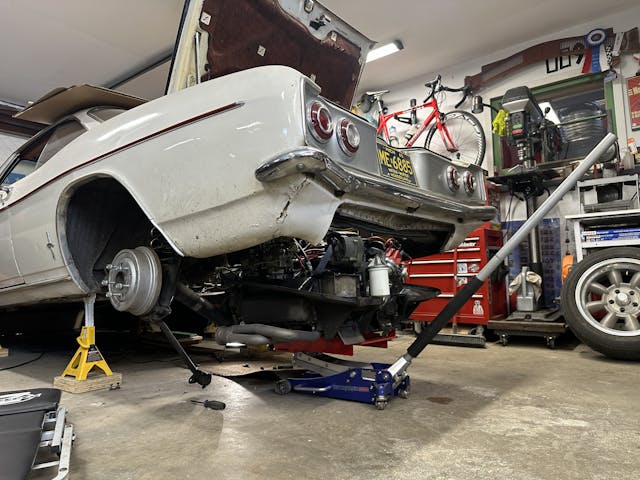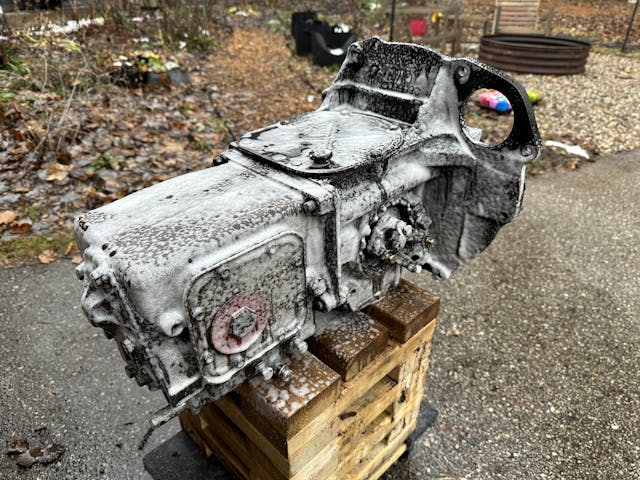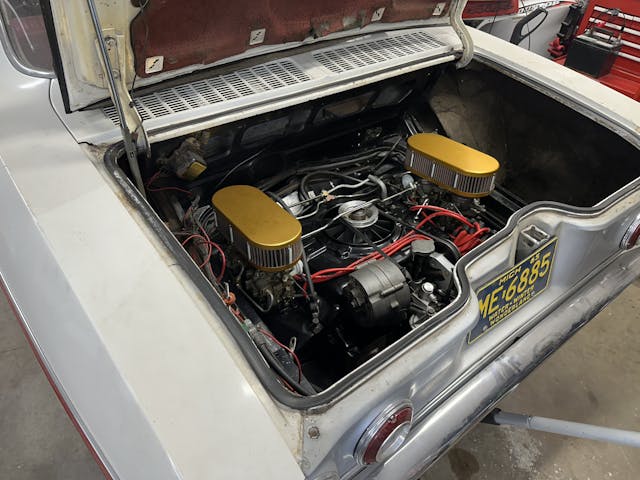A To-Do List Saved My Corvair Love Affair
In the middle of one of those “just stand and stare at things” garage sessions that happen sometimes, the realization set in that my Corvair has been in my garage for nearly seven years. To much of the readership here that may seem like “just getting acquainted” time, but due to several factors, in the past I tended to buy, enjoy, and then send down the road after a year or two most of my vehicles. Not for profit (HA!), but rather just to try or experience something different. Surprisingly, that approach has had interesting consequences.
This comes up because I am still slightly emotionally scarred from allowing that Corvair to sit in the garage for over two years in an un-drivable state. Only after a friend harassed me about how long it had been parked did it come into focus that I had mentally moved on from Corvair projects. It wasn’t something I was even thinking about, let alone prioritizing during my time in the garage. Once prodded, however, the job was done in a couple days’ time, but there was something about the experience that made me make a mental note as to how I could keep it from happening again. This last week, proof arrived that I had succeeded; the planned winter project for the Corvair is almost done just as the snow is melting off. [Annnnd, the snow is back.—Ed.]

So what changed? Mainly the process used to track projects. Previously, I’d severely underestimated the power of writing things down. It’s great not only for the literal keeping track of things, but for the ability to see and document progress at times when none is visible. Using the latest Corvair project as an example:
Day 1: Pulled the engine and transmission. Big change, easily seen.
Days 2–71: Parts scattered across the floor and workbench, occasionally the dining room table. A plethora of small changes and fits-and-starts progress that are all nearly invisible. Notes kept throughout remind me that while they may feel invisible, they are not.
Day 72: Engine and transmission were reinstalled in the car. Big change easily seen.
The flywheel replacement, the handful of gaskets and seals, along with a lot of cleaning and refinishing in between required a stick-to-it attitude that some might naturally have within themselves. The more times I tread this path the more I find it is lacking in me. My desire to work on large projects like this burns hot and fast. Sometimes that’s great as it means I can get a lot done in a fairly short amount of time. Other times it means things grind to a halt long before the project is done. So this time I put a focus on that. Not on the project itself, but on the part of my brain that easily tunes out. I had become that guy at the party who won’t let a song play all the way through before picking something else. Man, is he annoying.

So this time there was more documentation. More photos, more notes, and less discussion of the project. The idea was to actually do the tasks rather than talk about them. I’ve noticed that sometimes in the past talking about what I planned to do enough times would trip my brain into thinking I had already done the job. Then, when actually getting down to work, it felt as if I was walking well-trod ground instead of breaking the trail I should have expected. It’s always easier to talk about cleaning hardware and getting things assembled perfectly than it is to do those things.
Without a physical checklist in front of me tracking progress in poorly scrawled permanent ink on greasy cardboard, my brain was practicing creative accounting and crossing things off before I did them. Do this long enough and the brain declares the project complete, followed by short-circuiting after the eyes transmit the message that the car we are driving in our mind’s eye is actually a pile of parts in need of more time, money, and frustration. Everything is easy in your head; otherwise, I wouldn’t have already restored the 1964 Corvair Spyder that I saw on Marketplace this morning.


Keeping a list always seemed like a harsh reality check, like it was adding to life’s stress by sitting atop the thing that is supposed to bring joy—a reminder of all the things you haven’t done yet. That’s the wrong perspective. It is instead a way to remove the stress, not add to it. I can choose to only think about my project when I want to, without fear that I’ll forget where I was. Should the desire to chase something else arise, the list will be there, waiting for my return with a clear “You are here” on the adventure map that is a project car. You just have to make sure you return. Over the past few months, I have been. And it’s been better than ever.
To-do lists are things that nearly everyone tells rookies to utilize. Myself included. But before this winter, they just never seemed to work for me. Projects never progressed slowly enough to need them. Now, what started as a curious fling with a Corvair coupe has blossomed, seven years on, into a lasting relationship. If a car is going to be around for a while, it’s worth keeping better track of things. It’s sad it took me this long to figure that out. Luckily, now the fun begins.

***
Check out the Hagerty Media homepage so you don’t miss a single story, or better yet, bookmark it. To get our best stories delivered right to your inbox, subscribe to our newsletters.



Corvairs are really cool car. You really need to drive one. I really enjoy your articles and most of us Petroheads can relate to them. A list is a great idea but my personal problems with dismantling any part of a car, is that I can’t leave well enough alone. It’s got to go back cleaner, better looking and more functional than it came out…which is why my list never seems to end. It’s one of those while I’m in there things.
There is a philosophy based on the mental process you described. The idea is that because the brain does this process, it is best to not discuss plans with others because the more the plan develops and the more detail is created, the more the brain considers it a complete or completing story. This causes the brain and body to ‘Feel’ as though the plan is complete and therefore stops the biological process of creating urgency and motivation which leads us to doing nothing.
Naturally, my brain and body have lost the ability to ‘Feel’ where to find information supporting this philosophy I supposedly read some time ago.
This is probably blasphemy, but back in my college days (late 70s) I acquired a 66-67 Corvair and proceeded to convert it to a mid-engine V-8 car. The 350 Chevy in the back seat area, Chevy V-8 bell housing and clutch, connected to a converted Corvair transaxle. I believe it was a company out of Michigan, Mid-Engineering, that sold the transaxle conversion kit. A Cadillac 4 row radiator up front with electric fans and VW gas tank back in the old engine bay. Hydraulic clutch, long shifter linkage, and a long run of coolant piping to the radiator. It was a blast around campus and at the drag strip. The Corvair is long gone but I still have the transaxle! Could be another Corv-8 in my future!
I wouldn’t call a well-done mid-engine Corvair blasphemy at all! Personally have always wanted one myself. Maybe one day.
Kyle, like many others, I am stuck making no progress in several concurrent projects.
I need less information on the Corvair and more information on how you created and used the lists. Was there an Excel spreadsheet and what information did you record and track? Did you have a specialized program that was fit for purpose? Do you have a copy of the list in more than one place? My house and workshop are several 100 yards apart. I find myself making notes on separate pads of paper and then forgetting them in one location or the other. (My shop doesn’t have wifi so I can’t link things together electronically.)
Details please!